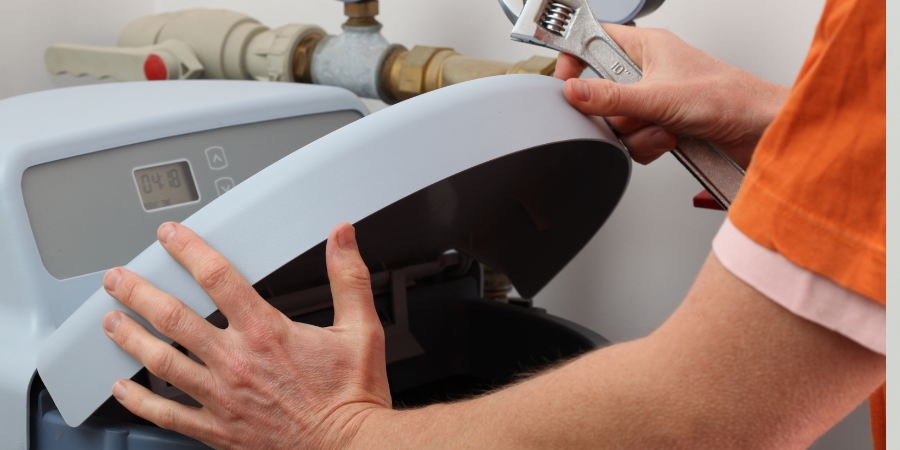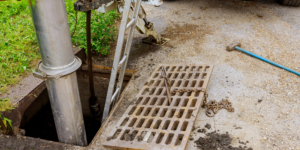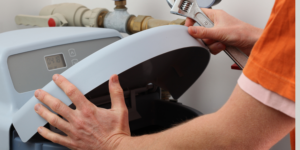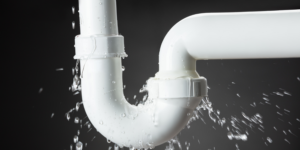Water softeners play a crucial role in maintaining the quality of water in our homes. These devices help mitigate the adverse effects of hard water, which can lead to various issues such as limescale buildup, soap inefficiency, and damage to appliances. Understanding whether your water softener is functioning correctly is essential for ensuring that you continue to reap the benefits of soft water, including prolonged appliance life, smoother skin, and cleaner dishes.
In this comprehensive guide, we will explore how water softeners work, the signs that indicate whether they are operating correctly or not, and the methods to test their effectiveness. Additionally, we will discuss common problems that can occur with water softeners and provide maintenance tips to keep your system running smoothly. By the end of this article, you will be well-equipped to determine the status of your water softener and take the necessary steps to maintain it.
Understanding Water Softeners
To effectively troubleshoot and maintain your water softener, it is important to understand how it works, its key components, and the different types available.
Basic Operation
A water softener functions by removing calcium and magnesium ions from hard water, which are responsible for water hardness. This process is known as ion exchange. Hard water passes through a bed of resin beads inside the softener tank. These beads are charged with sodium ions. As hard water flows through the tank, the resin beads attract and hold the calcium and magnesium ions, releasing sodium ions in their place. The result is softened water that is free of the minerals that cause hardness.
Components
A typical water softener consists of several main components. The mineral tank contains the resin beads where the ion exchange process occurs. The brine tank holds a salt solution that is used to regenerate the resin beads periodically. During regeneration, the salt solution flushes the accumulated calcium and magnesium ions off the resin beads, replenishing them with sodium ions. The control valve regulates the flow of water through the system and initiates the regeneration cycle based on the softener’s settings and water usage.
Types
There are different types of water softeners available, each with its own advantages and limitations. The most common are salt-based ion exchange softeners, which use sodium or potassium chloride for regeneration. Salt-free water conditioners use a catalytic media to alter the chemical structure of the minerals, preventing them from forming scale without actually removing them from the water. Magnetic or electronic descalers use magnetic fields or electronic pulses to change the behavior of minerals in the water, reducing scale buildup. Each type has its own application depending on water hardness levels, household needs, and maintenance preferences.
Signs Of Proper Operation
Knowing the signs of a properly functioning water softener can help you ensure that your system is working as intended. These indicators include the feel of the water, soap usage, the absence of limescale, and the longevity of appliances.
Soft Feeling Water
One of the most noticeable signs of a functioning water softener is the feel of the water. Soft water feels smoother and silkier to the touch compared to hard water. This is because the absence of calcium and magnesium ions in soft water allows soap to lather more easily, making your skin feel cleaner and less dry. If your water feels slippery or silky, it is a good indication that your water softener is working properly.
Less Soap Usage
Soft water improves the efficiency of soaps and detergents, leading to reduced soap usage. You may notice that you need less shampoo to wash your hair, less dish soap to clean dishes, and less laundry detergent to achieve clean clothes. This is because soft water prevents the formation of soap scum, allowing detergents to perform better. A reduction in soap and detergent usage is a clear sign that your water softener is effective.
No Limescale
Limescale buildup is a common problem in homes with hard water. It appears as white, chalky deposits on faucets, showerheads, and appliances. A properly working water softener will prevent limescale from forming, keeping your fixtures and appliances free of this unsightly and damaging residue. The absence of limescale is a strong indicator that your water softener is functioning well.
Longer Lasting Appliances
Appliances that use water, such as dishwashers, washing machines, and water heaters, tend to last longer in homes with soft water. Hard water minerals can accumulate in these appliances, leading to inefficiencies and eventual breakdowns. If your appliances are running smoothly and have a prolonged lifespan, it is likely due to the protection provided by your water softener.
Signs Of Failure
Recognizing the signs of a malfunctioning water softener can help you address issues before they cause significant problems. Common indicators of failure include hard water spots, soap residue, dry skin and hair, and limescale buildup.
Hard Water Spots
If you start to notice spots on your dishes, glassware, and cutlery after washing, it could be a sign that your water softener is not working properly. These spots are caused by mineral deposits left behind when hard water evaporates. Their presence indicates that hard water is bypassing the softening process and reaching your fixtures.
Soap Residue
A malfunctioning water softener can lead to increased soap residue on your skin, hair, and household surfaces. Hard water reacts with soap to form a sticky, insoluble substance known as soap scum. If you notice soap residue on your skin after bathing or on surfaces after cleaning, it may be due to hard water, suggesting that your water softener is not performing effectively.
Dry Skin and Hair
Hard water can cause dryness and irritation of the skin and hair. If you notice that your skin feels dry, itchy, or irritated after bathing, or if your hair feels rough and difficult to manage, it could be a sign that your water softener is not working correctly. These symptoms occur because hard water prevents soap from rinsing off completely, leaving a residue that can dry out skin and hair.
Limescale Buildup
The reappearance of limescale on faucets, showerheads, and appliances is a clear sign that your water softener may be failing. Limescale forms when hard water evaporates, leaving behind calcium and magnesium deposits. If you see limescale buildup in your home, it indicates that the water passing through your softener still contains hard minerals.
How To Test Your Softener
Testing your water softener regularly can help you determine its effectiveness and identify any potential issues. Common methods for testing include using hardness test kits, checking the regeneration cycle, and professional inspections.
Hardness Test Kit
A hardness test kit is an easy and reliable way to measure the hardness of your water. These kits are available at hardware stores and online. To use the kit, take a sample of water from a faucet after the softener. Follow the instructions provided with the kit to measure the hardness level. If the test indicates a high level of hardness, it suggests that your water softener may not be working properly and needs attention.
Check Regeneration Cycle
The regeneration cycle is a critical process in maintaining the effectiveness of a water softener. It replenishes the resin beads with sodium ions, ensuring they can continue to remove calcium and magnesium from the water. Check the control valve settings to ensure the regeneration cycle is programmed correctly. If the system is not regenerating as it should, it may lead to a decrease in performance. Ensuring that the regeneration cycle is functioning correctly is essential for maintaining soft water.
Professional Inspection
If you suspect that your water softener is not working correctly, or if it has been a while since the last inspection, consider hiring a professional plumber for a thorough check-up. A professional can perform a comprehensive inspection, identify any issues, and provide necessary repairs or maintenance. Regular professional inspections help ensure the longevity and efficiency of your water softener.
Common Problems
Water softeners can encounter several common issues that may affect their performance. Understanding these problems and their solutions can help you maintain your system effectively.
Clogged Resin Beads
Over time, resin beads in the softener can become clogged with iron, manganese, or organic matter, reducing their effectiveness. If you notice a decline in water softness, it may be due to clogged resin beads. Cleaning the resin beads with a specialized cleaner or replacing them can restore the softener’s performance.
Salt Bridge
A salt bridge occurs when a hard crust forms in the brine tank, preventing the salt from dissolving in water to create the brine solution needed for regeneration. This can lead to insufficient regeneration and reduced effectiveness. To fix a salt bridge, gently break up the crust with a broom handle or similar tool. Regularly checking the brine tank can help prevent salt bridges from forming.
Valve and Control Malfunction
The control valve regulates the flow of water through the softener and initiates the regeneration cycle. Malfunctions in the valve or control unit can disrupt the softening process. Common issues include worn-out seals, faulty motors, or incorrect settings. Inspecting and replacing faulty parts or reprogramming the control unit can resolve these problems and restore normal operation.
Maintenance Tips
Regular maintenance is essential for keeping your water softener in good working condition. Following these maintenance tips can help ensure the system’s longevity and efficiency.
Keep Brine Tank Filled
Maintaining an adequate salt level in the brine tank is crucial for the regeneration process. Check the salt level regularly and refill the tank as needed. Using high-quality salt designed for water softeners can prevent impurities from entering the system and reduce the risk of salt bridges.
Periodic Cleaning
Cleaning the brine tank and other components periodically can prevent buildup and maintain efficiency. Empty and clean the brine tank at least once a year to remove any accumulated sediment or debris. Cleaning the resin beads and other internal parts can also help maintain performance.
Annual Inspection
Scheduling an annual inspection with a professional plumber ensures that your water softener is functioning correctly and allows for the early detection of developing issues. The benefits of a professional inspection cannot be stressed enough.
Looking For Maintenance Services For Your Water Softener?
Water softeners, when working correctly, provide reliable relief from the effects of hard water on your plumbing system and appliances. It is important to monitor your water softener to ensure it is doing the job for which it was intended.
If you need help testing your system and maintaining it we recommend you give us a call. At Aqua Bear Plumbing and Drain we are experts at maintaining a well-working water softener to guarantee you continue to receive the benefits they offer. Contact us and we will be happy to add your name to our long list of valued customers who trust us to protect their plumbing systems from the ill-effects of hard water.



